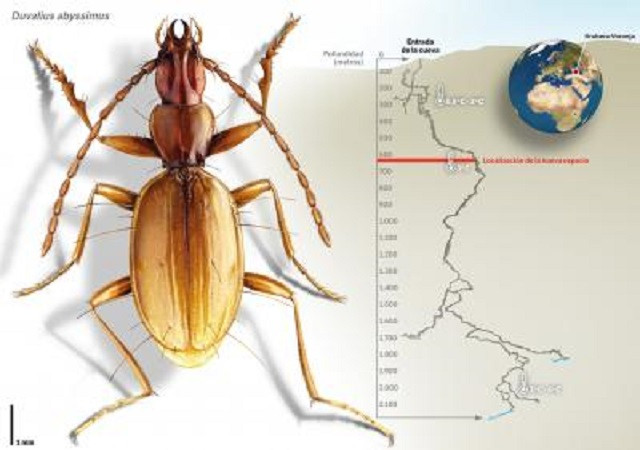Duvalius Abyssimus: New Species of Beetle Discovered in Deepest Cave Known to Man in Russia

A new species of beetle has been discovered deep underground in the Krubera cave in the Western Caucasus, southern Russia.
A male and a female Duvalius Abyssimus beetle were found by Ana Sofía Reboleira, a researcher from the Universities of Aveiro and La Laguna in Portugual, and Vicente M Ortuño, from the University of Alcalá in Madrid.
The Krubera cave is the deepest known to man, at 2,140m deep. The Arabika massif region where the cave is located is biogeographically extremely diverse, with altitudes changing from 1,900m to 2,500m.
The cave is composed of lower and upper Jurassic-Cretaceous limestone. Cave beetles are one of the most iconic insects to be found in subterranean habitats, being the first living organism described by science to be adapted to the conditions of life underground.
Duvalius abyssimus is from the Duvalius genus of beetles in the family Carabidae. They are successful colonisers of Earth's deepest points, with most species living in caves or underground compartments.
Ortuño said: "The new species of cave beetle is called Duvalius abyssimus. We only have two specimens - a male and a female. Although they were captured in the world's deepest cave, they were not found at the deepest point.
"The new species' characteristics indicate that it is moderately adapted to life underground. Proof of this is that they still have eyes, which are absent in the highly specialised cave species."
Published in the journal Zootaxa, the authors note that the cave is ideal for life to thrive, with "endless refuges" for fauna to grow: "Its location is strategic, since there are fauna of European, Asian and also endemic origin in the zone," he said.
"The discovery of the new beetle provides important data on species that co-exist in these almost unknown ecosystems, even more so when they are found in a geographical area that is very difficult to access, such is the case with this cave."
© Copyright IBTimes 2025. All rights reserved.






















